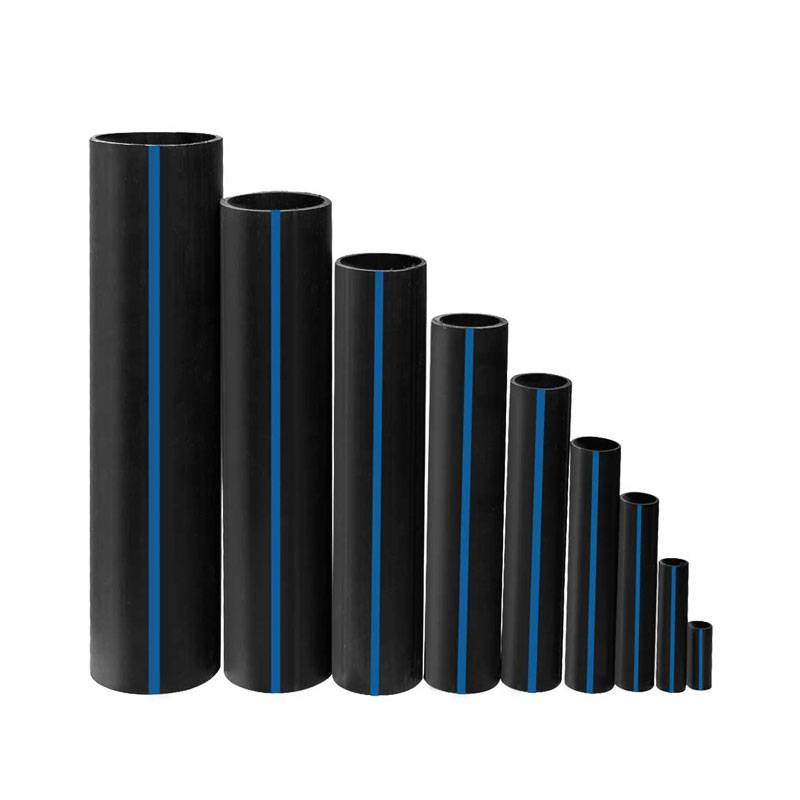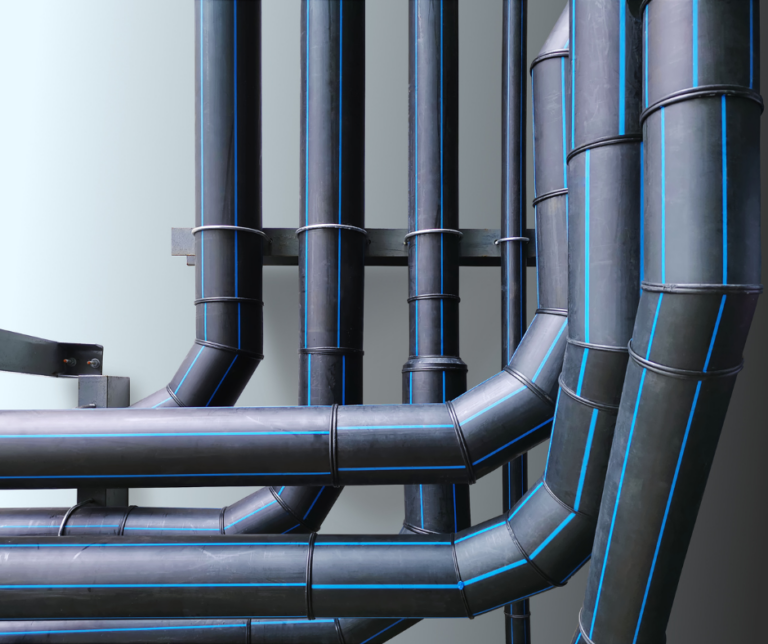Strengths of Choosing custom hdpe pipe manufacturing Midland TX for Unique Requirements
Wiki Article
Discover the Manufacturing Process Behind High-Quality HDPE Pipeline and Its Applications
The production process of premium HDPE pipes is elaborate and systematic. It begins with the option of basic materials that boost performance. Following this, ethylene goes through polymerization to develop material, which is then shaped through extrusion. Quality control is paramount, making sure that the end product satisfies stringent requirements. However, the journey of HDPE pipes does not end with manufacturing. Their applications across different markets reveal a more comprehensive relevance worth analyzing.Comprehending HDPE: Features and Advantages

High-density polyethylene (HDPE) is a functional thermoplastic recognized for its toughness and resistance to various ecological aspects. This product displays outstanding tensile stamina, making it appropriate for requiring applications. Its low-density framework adds to a lightweight product, helping with convenience of handling and setup. HDPE also showcases remarkable resistance to chemicals, which lessens degradation when exposed to rough compounds.
The material's reduced dampness absorption additionally improves its longevity, making it optimal for use in pipes and storage tanks. In addition, HDPE is resistant to ultraviolet (UV) radiation, making certain that items maintain their honesty even when revealed to sunlight. Its adaptability enables for the production of elaborate forms without compromising toughness. The eco-friendly nature of HDPE, often originated from recycled materials, includes in its appeal, promoting sustainable techniques in manufacturing. On the whole, these buildings and benefits make HDPE a recommended choice for different commercial and customer applications.
Basic Material Choice for HDPE Manufacturing
The choice of resources for HDPE manufacturing is crucial to confirm the last item satisfies the desired requirements and high quality standards. High-density polyethylene (HDPE) is mainly generated from polymerized ethylene, stemmed from fossil fuels such as natural gas or crude oil. The high quality of these feedstocks substantially influences the mechanical and thermal residential or commercial properties of the last HDPE.Additives also play a significant role in enhancing HDPE's performance, consisting of antioxidants, UV stabilizers, and colorants, which improve durability and resistance to environmental factors. The option procedure need to think about not only the chemical structure of the raw products yet likewise their handling features to guarantee effective manufacturing.
Furthermore, the sourcing of raw materials must focus on sustainability and conformity with ecological policies, as liable techniques are important in today's market. Ultimately, careful raw product choice lays the structure for creating high-grade HDPE pipelines ideal for varied applications.
The Extrusion Process: Forming HDPE Pipe
The extrusion procedure plays a vital function in shaping HDPE pipelines, starting with careful product preparation methods that ensure perfect circulation and consistency. Just as essential is the layout of the die, which straight influences the last dimensions and surface top quality of the pipeline. Together, these elements add greatly to the performance and high quality of HDPE pipe production.Material Prep Work Strategies
Efficient production of HDPE pipes starts with thorough material preparation techniques, specifically the extrusion procedure. During this stage, high-density polyethylene resin is initial dried to remove wetness, making sure optimal flow characteristics. The material is after that fed right into the extruder, where it undertakes home heating and melting, changing into a thick state. This home heating procedure is thoroughly controlled to preserve the material's honesty and performance. The molten HDPE is required through a die, forming it into a continual pipe type. Correct temperature level management throughout extrusion is important, as it straight affects the product's properties and the last item top quality. Once shaped, the HDPE pipe is cooled and reduced to defined sizes, all set for subsequent handling and applications.Die Style Value
Precision in die design plays an important duty in the extrusion procedure of HDPE pipes. The die works as the last shaping tool, straight affecting the pipeline's measurements, wall surface density, and surface finish. A repair water pipe leak in concrete slab properly designed die warranties consistent material circulation, reducing flaws such as abnormalities and weak points. The geometry of the die must be enhanced to suit the certain residential or commercial properties of HDPE, including its thickness and thermal actions throughout extrusion. Furthermore, the cooling price of the product as it goes through the die can considerably impact the pipeline's structural stability. Subsequently, investing in advanced die innovation is essential for producers intending to generate premium HDPE pipelines that satisfy industry criteria and customer expectations.Quality Assurance Actions in HDPE Manufacturing
Although different aspects affect the top quality of HDPE pipe manufacturing, efficient high quality control steps are critical to guarantee consistency and reliability in the end product. Key quality assurance methods include rigorous product examination, validating that the raw polyethylene fulfills well-known requirements for pureness and density. Throughout the extrusion procedure, specifications such as temperature, stress, and cooling time are very closely kept an eye on to preserve dimensional accuracy and structural stabilityIn addition, post-production screening is necessary; suppliers typically perform hydrostatic tests to evaluate the pipeline's stamina and resistance to stress. Visual inspections for surface defects additionally enhance top quality assurance. Certification from appropriate standards companies, like ASTM or ISO, gives an extra layer of trustworthiness. By implementing these thorough quality assurance procedures, manufacturers can lessen defects, enhance efficiency, and make sure that the HDPE pipelines meet the details requirements of various applications, inevitably resulting in consumer satisfaction and count on the item.
Applications of HDPE Pipe Across Industries
HDPE pipelines are made use of across various markets because of their sturdiness and adaptability. In water distribution systems, they assure effective distribution, while in wastewater management, they supply dependable remedies for waste transportation. Additionally, agricultural irrigation networks benefit from HDPE's resistance to deterioration and adaptability, making it an optimal option for modern-day farming techniques.
Water Distribution Systems
A substantial variety of markets rely on high-density polyethylene (HDPE) pipelines for effective water distribution systems. Understood for their sturdiness and resistance to corrosion, HDPE pipes are widely made use of in municipal water supply networks, farming irrigation, and industrial applications. Their light-weight nature promotes simple handling and installation, minimizing labor expenses and time. In addition, HDPE pipes can suit various pressure degrees, making them suitable for both reduced and high-pressure systems. hdpe pipe fittings Midland TX. The adaptability of the material permits smooth assimilation right into existing infrastructure, reducing the demand for comprehensive excavation. HDPE's resistance to chemical seeping guarantees that the water delivered remains risk-free and tidy, making it an optimal choice for preserving the high quality of safe and clean water throughout numerous fields.Wastewater Administration Solutions
Efficient water circulation systems likewise lead the way for innovative wastewater administration solutions, where high-density polyethylene (HDPE) pipes play a significant role. Renowned for their durability and resistance to corrosion, HDPE pipelines are suitable for delivering wastewater in different setups. Their adaptability permits for easy installation in complex environments, reducing the demand for comprehensive excavation. Additionally, HDPE's smooth indoor surface lowers friction, improving circulation rates and performance. These pipelines are additionally resistant to chemical leaching, making certain that contaminants do not jeopardize the surrounding atmosphere. additional reading Industries, towns, and therapy centers significantly rely on HDPE pipelines for their reliability and longevity, making them a preferred choice for contemporary wastewater management systems. This versatility underscores the vital significance of HDPE pipelines across countless applications.Agricultural Irrigation Networks
Agricultural watering networks profit substantially from making use of high-density polyethylene (HDPE) pipes, which provide effective and reputable water distribution to crops. HDPE pipelines are lightweight, making them very easy to carry and mount, while their flexibility enables for different setups in varied terrains. These pipelines demonstrate excellent resistance to corrosion, chemicals, and UV radiation, making certain resilience in extreme farming settings. Additionally, their smooth indoor surface area minimizes rubbing loss, maximizing water flow and minimizing power expenses related to pumping. The longevity of HDPE pipes, typically surpassing 50 years, adds to reduce maintenance and substitute expenditures. Farmers significantly rely on HDPE pipelines to boost irrigation efficiency and promote sustainable farming methods, eventually leading to boosted plant yields and resource preservation.
Future Fads in HDPE Pipeline Modern Technology
As the need for lasting and effective infrastructure expands, advancements in HDPE pipeline technology are positioned to change numerous industries. Arising trends consist of the assimilation of wise modern technologies, such as sensing units and IoT abilities, which help with real-time surveillance of pipeline problems, decreasing maintenance costs and avoiding leaks. Furthermore, the growth of advanced manufacturing strategies, such as 3D printing, is enabling the manufacturing of complicated, tailored pipeline designs that accommodate details project needs.The focus on recycling and round economy methods is driving the technology of HDPE pipelines made from recycled materials, enhancing sustainability. Enhanced jointing methods, such as electro-fusion and mechanical fittings, are also enhancing installation performance and integrity. Ultimately, the growing emphasis on ecological laws is pressing makers to adopt greener manufacturing procedures, making sure that HDPE pipes not just meet market requirements yet additionally foster a more sustainable future for framework development.
Frequently Asked Concerns
How Does HDPE Compare to Various Other Plastic Products?
HDPE outmatches many other plastic products pertaining to resilience, chemical resistance, and adaptability. Its reduced thickness and high tensile toughness make it suitable for different applications, typically surpassing alternatives in both efficiency and long plumber gas line repair life.What Are the Ecological Impacts of HDPE Production?
The environmental influences of HDPE manufacturing include greenhouse gas exhausts, power usage, and potential pollution from producing processes. Additionally, incorrect disposal can cause soil and water contamination, elevating issues regarding long-term eco-friendly results.Can HDPE Piping Be Reused?
Yes, HDPE pipelines can be reused. Numerous centers accept utilized HDPE for handling, changing it right into brand-new products. This recycling adds to sustainability efforts, lowering plastic waste while preserving resources and energy in the manufacturing cycle.What Is the Lifespan of HDPE Pipes?

Exactly How Do Temperature Variations Influence HDPE Pipeline Efficiency?
Temperature level variations considerably influence HDPE pipeline efficiency, impacting adaptability and strength. High temperature levels can bring about softening, while low temperatures may create brittleness, ultimately affecting the pipeline's sturdiness and viability for different applications in varied settings.Report this wiki page